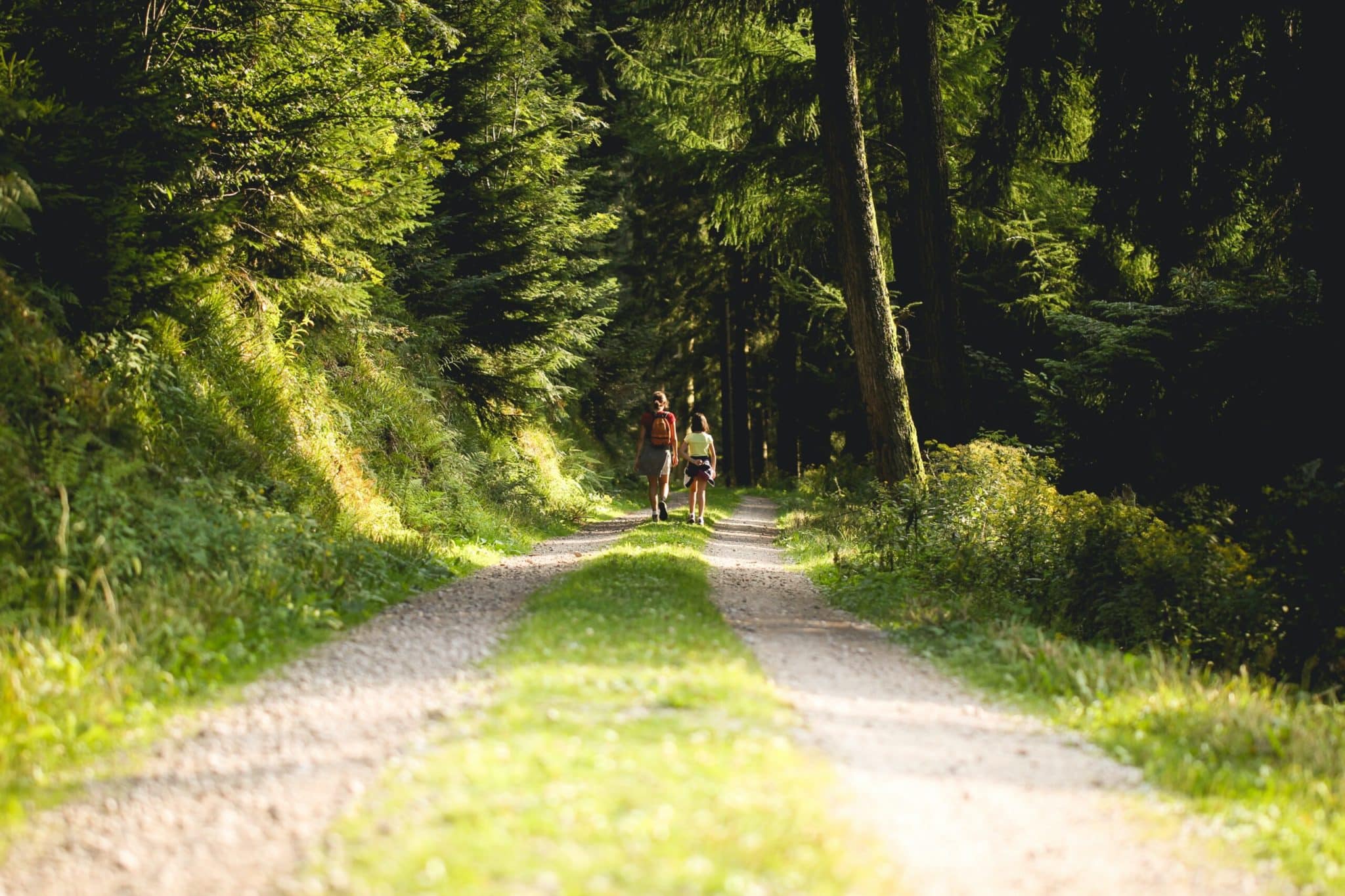Kent and Sussex are beautiful areas with some incredible trails to explore, packing some sandwiches and heading out for the day can be an excellent way to unwind by yourself or with your partner. However, when you are bringing the whole family along, what would be a quick jaunt if you were walking alone can transform into a marathon level effort. From organising the trip and heading out, the hike can take twice as long as it would for you alone. This means it is important to plan a trip that is not too long or difficult for them to complete.
Taking your children out for a hike can be a wonderful bonding experience. Despite this, it can be difficult to keep everyone on task, especially if your children don’t go out for walks often. This article will give you some tips and tricks for a fun and stress free hike with kids.
Where to go?
When planning a route for a family outing, selecting a trail which is flat and fairly easy to walk is a must. If the route is too steep or difficult, the kids in the group may become discouraged and upset. Checking reviews of the path online can be a fantastic way to gauge whether the difficulty of the hike is too much or if they will be able to walk it comfortably. If you are an inexperienced walker, then sticking to well-trodden paths with plenty of other walkers to help guide you if you get lost is a good way to ease into hiking as a family activity. If you have any favourite routes that may be a little difficult for your kids searching for alterations that would make the hike a little shorter is a great way to share it with your family.
Bewl water is a perfect place for a family friendly hike, with play areas and a well maintained track for those with less stamina to walk on. The route is well trodden with plenty of signs to help you find your way.
What to bring
It is important to bring plenty of equipment out with you on a long walk, whether you are alone or with the whole family. Getting little rucksacks for your kids to carry light things such as snacks, a disposable camera or a hat can be a good way to give them a lesson about being prepared in the outdoors. Of course, you may have to do most of the heavy carrying!
Here is a preliminary list of equipment you should think about bringing, although what is needed may change depending on the weather or length of the hike.
- Plenty of water is imperative to bring with you. If you are outside doing exercise, then dehydration can give you headaches and make you and your family feel weak. Packing a large water bottle will help you stay in tip top shape.
- Insect repellent and sun cream for the spring and summer will be life savers. Keeping away midges and staving off sunburn will make your hike much more comfortable.
- Weather specific clothing such as sun hats during summer and raincoats during the winter are key to making sure your trip is as easy as possible.
- Plenty of snacks for any rest stops. Healthy snacks such as raisins, apples, flapjacks and nuts are a great way to keep everyone’s energy up without being unhealthy
- While bringing a first aid kit is a good idea, for a local walk near home a small kit with wet wipes, plasters for cuts and paracetamol should be fine.
- A fully charged phone is key to have in case you get lost or have any sort of accident in order to call for help.
- A map and compass are key navigation tools for if you are trying a new route. If your phone loses signal, then any navigation apps you have downloaded may not work.
Consider everyone’s limits
Hiking can be hard for people who are not used to physical exercise with many first time hikers getting into difficulty even on shorter walks. If you haven’t been out in a long time it’s okay to take things slow and decide on a shorter walk to test everyone’s limits before heading out on a longer effort. When you are hiking it is tiring and young children can often get grumpy near the end of the route if they feel it is too difficult. Injuries such as blisters and scraped knees can quickly lead to tears as well.
If you are going on long walk, plan ahead and bring plenty of water and snacks. Regular rest stops to refresh and chat. Stopping for a picnic can be a great way to allow everyone to recharge before continuing the hike. Rushing early on will tire everyone out faster and will make the end of the walk far more difficult. Keep a slow pace and if in doubt keep it short so you can end on a happy high note rather than waiting to turn around and leaving everyone upset.
If you are considering pushing further than usual on a family hike the promise of a reward waiting at the end of the hike can keep everyone going for longer. Children are especially susceptible to bribes and can often quicken their pace quite a bit when promised a hot chocolate at the end of the walk.
Leave time for games
A great way to make your hike more enjoyable is play games while walking. There are hundreds of games you can play without any equipment that will keep everyone engaged in their surroundings. Here are a few classics that the whole family will enjoy:
- I Spy is a fantastic game for a hike that can be played with children of all ages. This can be customised to suit the natural surroundings by asking the kids to identify different types of bird call or species of tree rather than objects. Downloading an app can help you identify them correctly and whoever guesses correctly wins the game.
- Hide and seek is an immortal classic, asking your kids to follow you along the trail without being seen can create hours of fun and encourage your kids to explore.
- Nature photography is a great way to excite your children and foster an interest in the outdoors. Offering them disposable cameras to take pictures with as you walk can be a fascinating project for them. Showing them some professional examples from the national geographic and David Attenborough can help them see how best to capture a moment.
- Bird watching is a popular activity for all ages. Looking up different birdcalls and local species before heading out can give you a more concrete idea of what you are looking at.
- Picking up litter is an eco-friendly game for younger children. Children compete to see who can pick up the most litter they see along the route. Bringing a small prize for whoever finds the most litter on the way is a great way to keep the kids enthusiastic about litter spotting.

